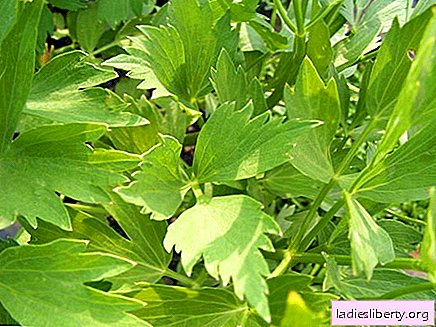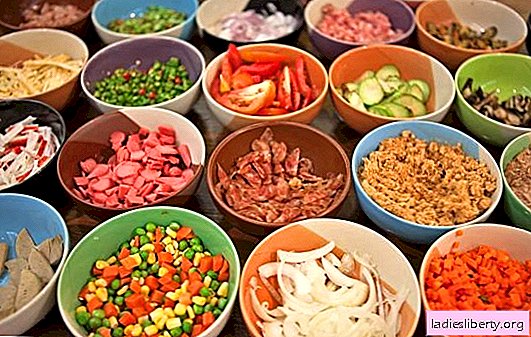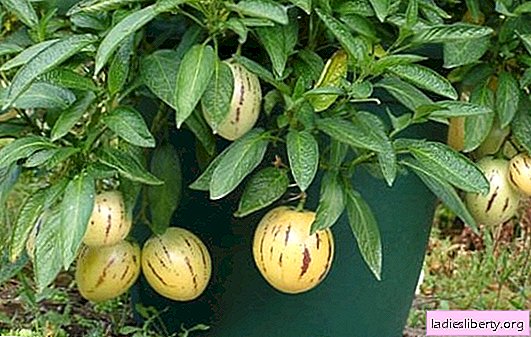
Lovage - General Description
As a medicinal plant lovage mentioned in the works of ancient authors Pliny and Dioscorides. A strong brownish-brown rhizome hides underground, a tubular stem reaching up to 2 meters and branching towards the end stretches up from it. Shiny leaves have wedge-shaped dentate lobes, which differ, depending on the position on the stem. The lower leaves have very long petioles, and at the top they are located directly on the stem. Yellow flowers gather in a complex umbrella, fruits - tan. The lovage has a peculiar spicy smell.
Lovage - types and places of growth
The motherland of the lovage is the south of Europe. In the Middle Ages it was grown here in the monastery gardens, and gradually the plant spread beyond them. Today, lovage can be seen in both Asia and America on plantations. Sometimes wild specimens are found that live mainly on the slopes of hills and hills, but the plant feels great in the shaded lowland.
Lovage - healing properties
Since ancient times, the lovage has been known in Russian medicine: the roots of the plant were valued as a remedy for dropsy. Today, in some states, this plant is included in medicines - teas and decoctions.
In our country, lovage is not used in scientific medicine, but folk doctors adopted the ancient traditions and recommend using decoctions for diseases of internal organs, digestive disorders, edema, anorexia, menstrual irregularities, kidney diseases, and rheumatism. German pharmacists indicate as indications for use - a feeling of fullness of the stomach and burping.
Herb infusions are used for compresses, baths and washes in the treatment of pustular skin diseases, as well as non-healing ulcers. To strengthen the hair, the broth is rubbed into the scalp. Known lovage as a diuretic, expectorant and anti-carcinogen, which is used to rinse the throat and oral cavity.
Lovage - dosage forms
The most commonly used lovage root and tea herbal mixture, including the root. But often the whole aerial part is used, including seeds. With a cold, it is customary to steam in a bathhouse with brooms made of leaves. To expel worms, children are given young stems for food. Lovage herb is used as an additive in blood purifying and stomach teas, and leaves are used to relieve headaches.
Lovage recipes
Tea from dried root lovage is prescribed for hair loss. It should be prepared according to this recipe: two teaspoons of chopped root should be steamed with a glass of boiling water in a thermos and left for five hours. Then cool, strain and apply to the scalp, washing off with hot water and egg yolk.
To increase sexual activity, it is recommended to pour two teaspoons of rhizome with half a liter of vodka and insist for two months. It is better to use fresh root for infusion and take the remedy after seven in the evening on a dessert spoon.
For edema, you should take a tablespoon of leaves and a half cups of boiling water and leave in a thermos for three hours, then cool. People who suffer from such an ailment are advised to use the drug in a tablespoon half an hour before meals.
Lovage - contraindications
Before flowering, the lovage rhizome becomes poisonous, so it is absolutely unsuitable for use during this period. It is recommended to dig out the root in the late autumn season. The plant is contraindicated for heavy menstruation, uterine bleeding, hemorrhoids and pregnancy. In addition, infusions and decoctions with a root is not advisable to boil.
Comments











